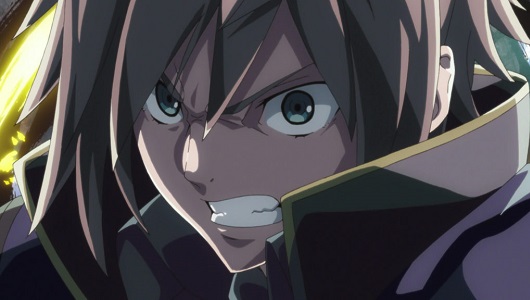God Eater 2: Rage Burst is an action role-playing game from Bandai Namco that wears its influences on its sleeve. Part-Monster Hunter, part-Phantasy Star, the game opens in the normal Japanese way – an animated intro movie with Japanese rock music and quick flashes of characters ready for battle. When you finally load up the game, it quickly becomes bogged down in another aspect common in Japanese titles – the overly complicated tutorial.
[youtube id=”TSL-SOPVPIs” align=”center” maxwidth=”530″]
• Developer: Shift
• Publisher: Bandai Namco Entertainment
• Reviewed on: PlayStation 4
• Also Available On: PlayStation Vita, PC
• Release Date: Available Now
Rage Burst opens three years after the original God Eater Burst game on PlayStation Portable. When the Far East Branch of the first game is struck by a pandemic known as Red Rain, it is up to the Blood forces in Fenrir’s mobile base, the Friar to investigate the problem. You begin the game as a recruit and must acclimatise quickly to your team and surroundings.
After the rudimentary character creator is used to (crudely) imitate your likeness, it is off to the training grounds to get your feet. However, it took almost eight hours before I was able to get my head around most of the systems at work in the game and even now, I know there are other elements I didn’t even touch on. After teaching you how to look around and move, the game just sort of leaves you to it. After that, all information is gathered by randomly asking NPCs to explain things or by reading through the veritable encyclopaedia that is the game’s Database.
I can imagine that if you have already played the first game that these issues would be minimised but for me, the slow pace of the story and boring initial mission structure made things worse. Eventually, the game starts to open up, and you manage to get enough of a grasp on the mechanics that it starts to become enjoyable. Like
The moment-to-moment gameplay could best be categorised as a hack-n-slash. You have your primary melee weapon, usually a sword or battleaxe to fend off enemies, but you can also switch to a projectile weapon for long range attacks. The game is team-focussed too, and thankfully, your comrades are not brainless idiots who need to be babysat – they can take care of themselves for the most part and actually help you out when you get into trouble.
The game also features an online co-op mechanic that brings out the best in the game. Rage Burst asks you to work as a team to complete some of the more challenging missions, using combinations and special moves that complement each member of the team. This in turn benefits everyone so griefing was at a minimum during my play-time.
Playing the game offline is also rewarding, though you need to put up with a stereotypical story that takes far too long to actually get going. It features the usual archetypes you’d expect from a Japanese RPG, but due to some lacklustre writing, you never feel all that connected to them either. Regardless of the story, the missions themselves do become more interesting and diverse as you progress so the narrative becomes less important.
Visually, the game does not impress. It looks like a lot of games that have come out before it. However, seeing special moves being pulled off and watching the screen become a kaleidoscope of colour for a few seconds at a time is appealing. The game’s soundtrack also matches the opening’s thumping rock anthems and is pleasing to listen to as you rip up the game’s Aragami enemies.
God Eater 2: Rage Burst is a tough pill to swallow in the beginning. It seemingly does everything it can to stop you playing the game or put you off. But if you can stick it out, the game provides hours of Aragami-hunting fun.











